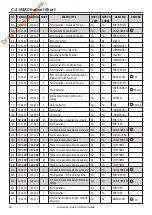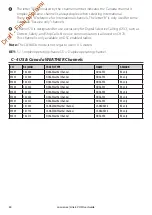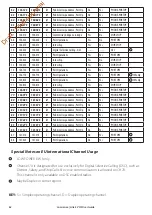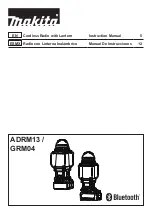
Lowrance | Link-5 VHF User Guide
67
Appendix E - MMSI, FCC and License Information
You must obtain a user MMSI (Marine Mobile Service Identity) and enter it into your radio
before you can use the DSC functions. Contact the appropriate authorities in your country. If
you are unsure who to contact, consult your Lowrance dealer.
The user MMSI is a unique nine digit number, similar to a personal telephone number. It is
used on marine transceivers that are capable of using DSC (Digital Select Calling).
Depending upon your location, you may need a radio station license for this radio. You may
also need an individual operator’s license.
Lowrance recommends that you check the requirements of your national radio
communications authorities before operating DSC functions.
To enable the DSC functions in this radio:
•
Enter your valid MMSI: MENU > DSC SETUP > USER MMSI
•
Ensure DSC is turned ON: MENU > DSC SETUP > DSC FUNC
FCC Compliance
This device complies with Part 15 of the U.S. Federal Communications Commission (FCC) Rules. Operation
is subject to the following two conditions: (1) this device may not cause harmful interference, and (2) this
device must accept any interference received, including interference that may cause undesired operation.
Changes or modifications not expressly approved by the manufacturer could void the user’s authority to
operate the equipment.
Note:
This equipment has been tested and found to comply with the limits for a Class B digital device,
pursuant to Part 15 of the FCC Rules. These limits are designed to provide reasonable protection against
harmful interference in a residential installation. This equipment generates, uses and can radiate radio
frequency energy and, if not installed and used in accordance with the instructions, may cause harmful
interference to radio communications. However, there is no guarantee that interference will not occur in
a particular installation. If this equipment does cause harmful interference to radio or television reception,
which can be determined by turning the equipment off and on, the user is encouraged to try to correct
the interference by one or more of the following measures:
•
Reorient or relocate the receiving antenna.
•
Increase the separation between the equipment and receiver.
•
Connect the equipment into an outlet on a circuit different from that to which the receiver is
connected.
•
Consult the factory customer service department for help.
FCC and IC RF Emissions Notice
This radio transceiver when transmitting emits Radio Frequency energy. The FCC and IC have developed
guidelines for RF exposure safety. The antenna should be mounted in such a way that it maintains a separa-
tion distance as described in the table below from the user or bystanders when transmitting:
Separation distance:
Antenna system gain:
35 inches (89 cm)
3 dBi
25 inches (63 cm)
0 dBi
Draft
- Final
approval


































